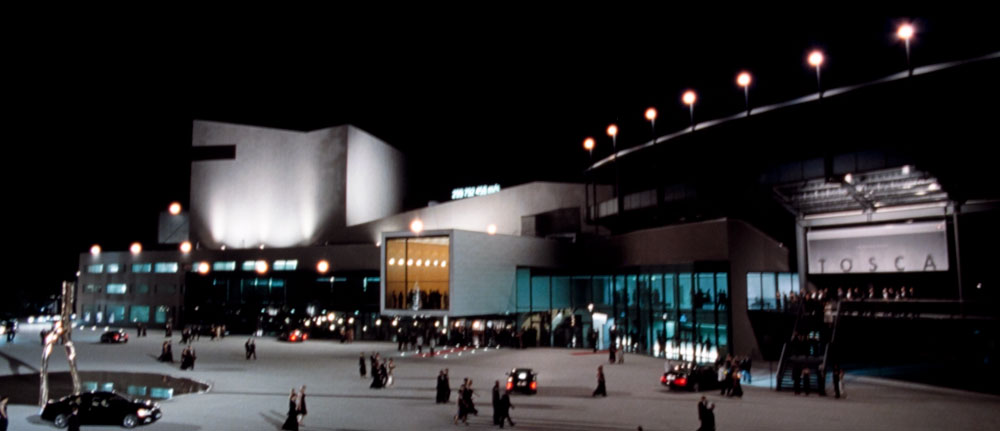This mini review of the Pro Cinema 6010, therefore, will focus primarily on the differences, with the goal of helping you decide if this Pro Cinema 6010 makes more sense for you, than the 5010. Click for the full Home Cinema 5010 review.
Epson Pro Cinema 6010 Special Features
THX Modes
Here lies one real performance difference between the Pro Cinema 6010, and the lower cost Home Cinema 5010!
Epson provides two THX modes for the Pro Cinema 6010. The first is your basic 2D THX mode. It looks great. It's more accurate than the already very good Natural mode of the 5010, which is technically the "best mode" of the 5010. I suspect that most folks purchasing a Pro Cinema 6010 will not feel the need to have it calibrated, thanks to the THX mode. (Note: Due to things like lamp variation, you will still be able to further improve the 6010 by calibrating it, but the improvement is likely to be very slight)!
But the real home run is the Epson Pro Cinema 6010 projector's 3D-THX mode!
Wow! The 3D THX mode, actually looks better than 3D-Cinema mode, yet it's also brighter. When I'm watching the Home Cinema 5010, I almost alway use 3D-Dynamic, because for my room, screen, and tastes, 3D-Cinema just isn't bright enough. With the Pro Cinema 6010, I found that the 3D-THX mode had enough brightness to satisfy me, when I really wanted "best" color. That is to say, I mostly still use 3D-Dynamic, for much of the 3D, but definitely would prefer 3D-THX for content like Hugo, or even Legends of Flight, or Ultimate Wave, or any other content when I'd prefer skin tones to be at their best, and color, overall, to be pretty accurate, but when I can live with a little (not a lot) less brightness.
Consider the 3D-THX mode to be, perhaps the single most important difference between the Pro and Home models, although the standard THX mode might just save you a few hundred dollars in terms of a calibration, so that's not exactly insignificant either.
Anamorphic Lens Support
If you must have a 2.35:1 or 2.40:1 Cinemascope shaped ("widescreen") screen, the Pro Cinema 6010 supports using an anamorphic lens, with or without a motorized lens sled. This is another difference from the Home Cinema 5010 which lacks the anamorphic lens support!
Split Screen viewing
Like the 5010, the Pro Cinema 6010 offers picture-in-picture, or more accurately: Split Screen viewing. That is a very nice feature which I’ve actually used from time to time. Since the Pro Cinema 6010 offers the same Split Screen viewing as the Home Cinema 3010 and 5010 projectors. I've dropped in and updated a previous description from one of our earlier reviews:
"The projector lets you select two different sources and put them up side by side, either with both images the same size, or the one you designate, to be larger than the other (about 2:1).
Here's the catch (a standard one). You can't feed it two different HDMI sources, because there is, as is typical, only 1 HDMI circuit in the projector (shared by the two inputs). That means you will need a second source, and if you want that second source to be another hi-res source, you are looking at either component video or traditional analog computer. I'm just pointing all this out to you. It's no sweat if you aren't mounting the projector and have a temporary setup. It's always easy to run another wire as long as they are outside of walls. If you are wiring, though, and not sure, add a component video, analog computer, or a pair of USB cables (the analog computer also carries component, so the most flexible).
Click here to enlarge. I did it. Had to rummage through my storage room, found a component video cable and fed component from my satellite box, and HDMI from my PS3, and put them up side by side. I am ready for Fantasy football - with the game on one side, and my online tracking of my players on the other. Why not!
 Click Image to Enlarge
Click Image to EnlargePro Cinema 6010 Dynamic Iris
Click here to enlarge. A dynamic iris is the key on most projectors to improving overall black levels on darker scenes, and the resulting improvement in the viewing experience. This discussed in depth in the Special Features section of the Home Cinema 5010 review.
 Click Image to Enlarge
Click Image to Enlarge


